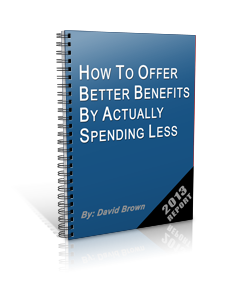 In 2014, the Affordable Care Act will require nearly all Americans to have health insurance, and you better pay attention. Americans who are not offered Affordable Health Coverage through an employer-sponsored health plan will be able to purchase health insurance through the exchange (CoveredCA in California).
In 2014, the Affordable Care Act will require nearly all Americans to have health insurance, and you better pay attention. Americans who are not offered Affordable Health Coverage through an employer-sponsored health plan will be able to purchase health insurance through the exchange (CoveredCA in California).
However, many will not be able to afford the coverage they are required by law to purchase. To help defray the cost of health insurance for low-income individuals and families, two types of assistance will be available from the federal government—premium tax credits and cost sharing reductions. In general this means if you qualify for a subsidy your premiums for a Health Insurance after the Subsidy will cost you 9.5% of you household income.
But that doesn’t mean you will qualify. Even if you are barely scraping by each month, you may not be eligible for assistance.
Affordable Health Insurance Explained
If your employer offers you affordable coverage, based on any of the below definitions, you and your family are not eligible to receive a tax credit even if that coverage costs your entire salary.
Employer sponsored Health insurance is considered Affordable any one of these criteria are meet:
- Form W-2: Your contribution for the year does not exceed 9.5 percent of the income reported in Box 1 on your W-2 statement.
- Rate of Pay: Your monthly contribution does not exceed 9.5 percent of your monthly income. Monthly wages are calculated as the hourly rate times 130 for hourly employees and the monthly salary for salaried employees.
- Federal Poverty Line: Your contribution does not exceed 9.5 percent of the federal poverty line for an individual.
Who is Eligible for a Premium Tax Credit?
Premium tax credits are calculated based on the applicant’s household income and cost of the benchmark plan (Silver Level Plan). If you are eligible for a tax credit, it will automatically be paid by the government to the insurance company to reduce your monthly premium. Because it can be difficult to accurately predict the annual household income, any necessary adjustments to the subsidy you received will be made on your tax return.
To qualify for a premium tax credit, you must:
- Have a household income between 133 and 400 percent of the federal poverty line. Under the 2013 federal poverty guidelines, the annual income thresholds to qualify are: $45,960 for individuals; $62,040 for couples; $78,120 for a family of three; and $94,200 for a family of four.
- Not have access to an affordable health insurance plan through your employer
- Purchase a health insurance plan through the exchange (coveredca).
If you do not meet all of these criteria, you will not qualify for a premium tax credit.
Who is Eligible for a Cost Sharing Subsidy?
Individuals with a household income of 100-250 percent of the federal poverty line, who enroll in a plan through the exchange (coveredca) are eligible for a cost sharing subsidy. Under the 2013 federal poverty guidelines, the annual income thresholds to qualify are: $28,725 for individuals; $38,775 for couples; $48,825 for a family of three; and $58,875 for a family of four.
Cost sharing subsidies are designed to minimize out-of-pocket costs by reducing the amount individuals have to pay for deductibles, co-payments and co-insurance payments. The amount of the reduction depends on the insured’s household income.




